How Would You Repair This Stem? (an ISPD Tragedy)
- Thread starter hiplainsdrifter
- Start date
You are using an out of date browser. It may not display this or other websites correctly.
You should upgrade or use an alternative browser.
You should upgrade or use an alternative browser.
- Status
- Not open for further replies.
Why would it need a band at all then if the compound breaks were clean? Bands are more for cracks because you cannot get into a crack properly to fix them well. Assuming there was no missing bits of wood and a PVA glue was used (polyvinyl acetate), which is stronger than the wood itself, there was every chance that reassembled and glued, the breaks would be nearly invisible and stronger than original! No band needed.That's called a "puzzle break". As long as you have all the pieces (and they are in good shape... not stepped on or something), and you don't mind owning a pipe with a wide band, it is fixable.
I’m glad you are happy with it and it does indeed look fine, but I cannot agree that just shortening the shank was anything “amazing.”George did an amazing job of shortening the shank and remounting the stem
Why would a repair band have to be any different than a regular band, which is NOT tapered? I don’t see why a properly made and countersunk band would need glued at all. And how much strength do you need just to hold a stem in such a small pipe? Done well, there would be more strength than original without the band and the joints would be so clean and natural that there would be no need to hide them.Contrary to what they look like at any distance, repair bands are actually slightly conical. It's necessary for two primary reasons: the physics of application & mounting, and that's how most pipe shanks are also shaped (it's an artifact of stem/shank leveling). The shank on Mr. Drifter's pipe, though, had no taper at all. The only way to band it was to fabricate a parallel-sided band that would be a "slip fit", and glue it in place. For both strength and aesthetic reasons, it would also have to be countersunk.
There goes my no-sense detector again. Sterling silver? You went through all of that not knowing it would not work? How much are you charging anyway for all your time? $500? How can this pipe be worth all of that work just to fix a simple break? But the point here is that you obviously do not know how to make a band; if you are going to be in the pipe repair business, you need to first make a set of forms that match the stem sizes. Then you can easily shape the band material to fit the form, even hammer a design into it, trim its length to fit properly, then braze the seam together at the joint. After filing the excess metal off and polishing it properly, you will never tell where the original joint was, and tapered or straight, it can be fitted on perfectly to do the job--- no glue needed. A band should never be glued on anyway if it was made properly in the first place.And... the only way to make such a band would be to either cast it, jeweler-style, or chase it from a piece of sterling silver tubing. (Either option a fair project in its own right)
I didn't have the equipment for the former, tried the latter, and finally gave up. (Hammer-shaping a 1" long, oval cross-section, parallel-sided band on a circular-cross-section, tapered ring mandrel is madness, I discovered.)
Again, maybe for you, but not for a professional with the proper tools. Nothing could be much easier than drilling an axially-aligned hole in the shortened stem if you know what you are doing. No gray hairs needed.So, the backup plan was shortening the shank. Easier, but no cakewalk. Drilling accurate (i.e. axially aligned) holes in irregularly shaped objects and achieving a glide-smooth, dead-flush fit in three dimensions---with do-overs not an option---is why most pipe repairmen have gray hair, I think.
If you work with pipes all of the time, you should have a set of wooden vee-blocks. You insert a transfer punch onto the draw hole; in most cases that will be synonymous with the axis of the stem. You insert the punch up into the collet of your machine and tighten. You then clamp the vee blocks around the pipe in a vise, preferably a 2-stage one that can be tilted as well as rotated. Now you have your reference alignment automatically set.
You check the axis of the punch with the centerline of the stem--- if they are not already coincidental or you want to make adjustments, then you can make fine adjustments to the vise. Now, any drilling or facing you do will be perfectly square along that plane and if the end of the shank is not already orthogonal, it can be squared up using a light touch with a 4 or 6-fluted end mill. Simple as that. Perfect results, no gray hairs, and no freakin’ mystery.
I don’t mean to be a sour pill here, guys, but I get sick and tired of reading about the “mystery” and hair-raising difficulty of pipe repairs and all their difficulty when in fact, to anyone really in the know of master wood and metal crafting, this is all pretty simple stuff and I’m tired of seeing smoke (ahem) blown up people’s butts here like it was some sort of big deal! And all this from a guy who speaks to others of comic relief? Gimme a break.
Tmb, I call bullshit to your entire diatribe. Point. By. Point.
But thanks for wasting my mental bandwidth.
But thanks for wasting my mental bandwidth.
Well, tmb, talk is cheap. We've seen what George can do (and I'm a very happy customer). I'm anxious to see the results that have come out of your shop. The pipe world can always use another repairman option. Guys or gals that will make a new stem are in relatively short supply. Strut your stuff.
Yeah. It's down to that, I think.Strut your stuff.
Pipe repair has a LOT of backseat drivers. Curiously, it has few practitioners. :lol:
This TMB fellow is the PipeWorld version of those Internet badasses who once took a karate class in junior high telling UFC fighters everything they did wrong in their last match, I think.
So. Only before and after photos as comments from here on out, TMB. Talk is cheap.
You must also declare the work before you start it, then follow up a day or two later. (And we'll know when that is and what you get because people from this board will be the ones sending you stuff). Cherry picking successes would be very naughty, you see. :lol:
Not gonna happen. In between being an engineer, audiovisual genius, antique restorer, master woodworker, expert jeweler, and international man of mystery, no one has time to repair pipes. If this guy made a pilgrimage to Calcutta, Mother Theresa would punch him in the nuts for trying to tell her how to be Catholic.
This wins the internet tonight.Not gonna happen. In between being an engineer, audiovisual genius, antique restorer, master woodworker, expert jeweler, and international man of mystery, no one has time to repair pipes. If this guy made a pilgrimage to Calcutta, Mother Theresa would punch him in the nuts for trying to tell her how to be Catholic.
:clap:
-- Pat
PS - fnord's gonna snort his bourbon out his honker when he reads your comment aldecaker
You got that right, SS, but the market is just too limited and unfortunately the money is just not there--- the reason why so few do the work. And insults sure won't encourage me to join the fray. The work George did above is not what I would have chosen to do, even if the outcome looks nice, I would want to preserve the pipe as original, but I'd love to know what he charged for all the time spent trying to hammer a piece of silver into a band?The pipe world can always use another repairman option. Guys or gals that will make a new stem are in relatively short supply.
Sadly, the information I've already given in several recent threads is enough to tell anyone who knows what I'm talking about that I know how to do the stuff, which obviously few here do.
Pictures of my work? I'd post some photos of things I've done if they could be attached directly; I don't need to prove anything to anyone. But they wouldn't make a lot sense probably because most of my work is for things probably no one here would know anything about.
Many of you just take me the wrong way for some reason, you are not the kind of crowd I usually talk to and my mannerism comes across poorly, not sure why, maybe there has been so many BSers on this place you just think I'm just another. But as stated on another thread, it just does not make sense to spend hundreds of dollars to fix a pipe that you can replace for $150, and if it is some antique, then it comes down to either a labor of love or personal favor. You can forget any favors for any of the people that constantly slam me, but I have my friends here, though they stay quiet publicly for fear of getting attacked too, but SS, I'm a good read of people and you're an OK guy in my book and if you or any of the other people here who've been reasonable ever have a pipe issue you can't get resolved otherwise, write me and I will at least look at and consider it.
most of my work is for things probably no one here would know anything about
Very condescending remark here. This is why you are not well liked. This is not Slingblade Central, we have many sciences represented and other scholarly types among our ranks. You obviously haven't seen much of George's work to talk shit like you did. Armchair quarterbacking if I ever saw it. The customer is happy and that is the name of the game. You are obviously bright. I think you are too "normal" somehow, or self important. You need to work on that. It took me a good while to relax on this forum and I still get my panties in a bunch every so often. Just listen to these men and women. You will become a better person for it. I know I have. Just apologize for being a dick and we'll all move on.
https://www.youtube.com/watch?v=4pz2kXoDo_s
Sorry dude, talk isn't just cheap, it's free.
:rofl:
I repeat: No more talk, and no more excuses. It's picture time. A series of well lit, detailed, step-by-step closeups posted in sequence. Anything less is BS.
PS -- It was $40, sterling band included.
Ah... You can't handle figuring out how to post a photo as a direct link on the Internet, but it doesn't matter because you have nothing to prove and no one would understand your work anyway.Pictures of my work? I'd post some photos of things I've done if they could be attached directly; I don't need to prove anything to anyone. But they wouldn't make a lot sense probably because most of my work is for things probably no one here would know anything about.
:rofl:
I repeat: No more talk, and no more excuses. It's picture time. A series of well lit, detailed, step-by-step closeups posted in sequence. Anything less is BS.
PS -- It was $40, sterling band included.
Tmb, this is exactly why you come off like a tool.
My job is very exacting and there aren't a whole bunch of folks in the world that do what I do. Guess what, big fucking deal. We're here to discuss pipes and such, not measure Dicks. Speaking of which, pics or it didn't happen.
I totally agree with Mayfair.
My job is very exacting and there aren't a whole bunch of folks in the world that do what I do. Guess what, big fucking deal. We're here to discuss pipes and such, not measure Dicks. Speaking of which, pics or it didn't happen.
I totally agree with Mayfair.
- Status
- Not open for further replies.



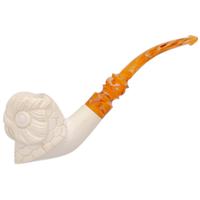
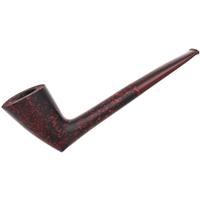
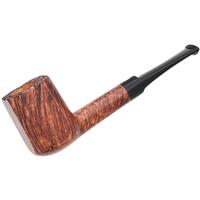
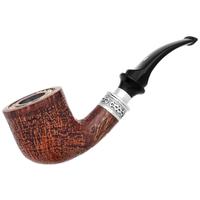
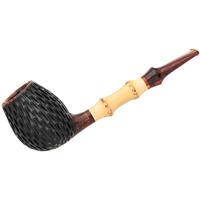






 :
: